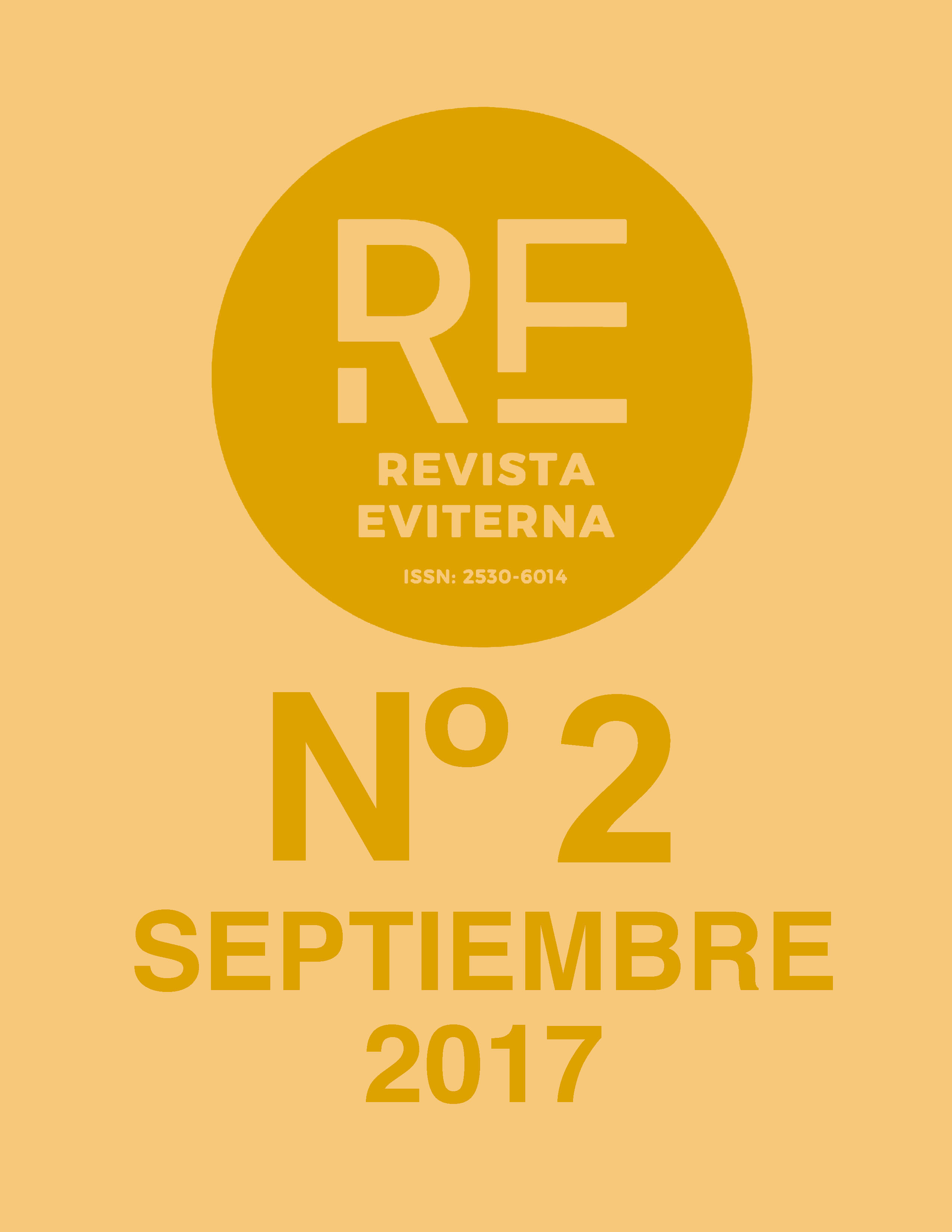From pre-Hispanic shrines to Otomi family chapels
DOI:
https://doi.org/10.24310/Eviternare.v0i2.8131Keywords:
History; Evangelism; Domestic oratory; Worship spaces; San Miguel TolimánAbstract
The chapels and domestic oratories have been the important places in the religious worship of some mexican indigenous communities. This brief historical tour will begin with the ancient precolonial temples, finishing with the treatment of the otomi chapels of the XVIII-XIX centuries, in the locality of San Miguel Tolimán. I will explain the origin and importance of these chapels in the tradition of sacred spaces that has influenced in the identity of the Otomies of central Mexico.
Downloads
Metrics
Publication Facts
Reviewer profiles N/A
Author statements
Indexed in
-
—
- Academic society
- N/A
- Publisher
- Universidad de Málaga
References
CASTILLO, Aurora (2000), Persistencia histórico-cultural: San Miguel de Tolimán, Universidad Autónoma de Querétaro: Querétaro.
CHEMÍN, Heidi (1993), Las capillas oratorios otomíes de San Miguel Tolimán. Ya t’ulo nijõ dega södi ñuhu ya mengu Nxemge, Fondo Editorial de Querétaro, Consejo Nacional para la Cultura y las Artes, Dirección General de Culturas Populares Unidad Regional-Querétaro: Querétaro.
DIVERSAS PETICIONES Y LICENCIAS (1600), Diversas peticiones y licencias para celebrar servicios religiosos en capillas y oratorios particulares México, Archivo General de la Nación, México, grupo documental Bienes Nacionales, caja 653, exp. 1, f. 1v.
HEKKING, Ewald; ANDRÉS DE JESÚS, Severiano (1989), Diccionario español-otomí de Santiago de Mexquititlán, Universidad Autónoma de Querétaro: Querétaro.
INVENTARIO (2009), Inventario de las Capillas familiares otomí-chichimeca, vol. 1, Poder Ejecutivo del Estado de Querétaro: Querétaro.
LICENCIA PARA QUE SE CELEBRE EL SANTO SACRIFICIO DE LA MISA (1789), Licencia para que se celebre el santo sacrificio de la misa en la iglesia de San Miguel del partido de San Pedro Tolimán, Archivo General de la Nación, México, grupo documental Bienes Nacionales,México caja 575, exp. 104, f. 1r-4v.
LUGARES DE MEMORIA (2010), Lugares de Memoria y Tradiciones vivas de los pueblos Otomí-Chichimeca de Tolimán. La Peña de Bernal, guardián de un territorio sagrado, Poder Ejecutivo del Estado de Querétaro: Querétaro.
MENDIETA, Jerónimo de (1870), Historia eclesiástica indiana, Antigua Librería, Portal de Agustino no. 3: México.
NOMBRAMIENTO DE LOS RELIGIOSOS (1652), Nombramiento de los religiosos de la orden deSan Francisco, Archivo General de la Nación, México, unidad documental Reales Cédulas Originales y Duplicados, vol. 17, exp. 88, f. 98v- 100r.
NOMBRAMIENTO DEL PADRE FR. ANTONIO DE ACEVEDO (1671), Nombramiento del padre Fr. Antonio de Acevedo de la orden de San Francisco, Archivo General de la Nación, México, unidad documental Reales Cédulas Originales Y Duplicados, vol. 29, exp. 175, f. 312r- 315r.
PARA QUE EN ESTOS REINOS SE OBSERVE LA LEY (1787), Para que en estos reinos se observe la ley que se inserta sobre la impetración y concesión de licencia de oratorios domésticos así urbanos como rurales, Archivo General de la Nación, México, grupo documental Reales Cédulas Originales, vol. 136, exp. 166, f. 286v.
PRIETO, Diego; UTRILLA, Beatriz (2012), “Amalgama de culturas: La región chichimeca otomí del semidesierto de Querétaro y Guanajuato”, en VALLE, Julieta; PRIETO, Diego; UTRILLA, Beatriz (coord.), Los pueblos indígenas de la Huasteca y el semidesierto queretano, atlas etnográfico, pp. 51-67, Instituto Nacional de Antropología e Historia (INAH), Instituto Nacional de Lenguas Indígenas (INALI), Universidad Autónoma de Querétaro (UAQ), Instituto Queretano de la Cultura y las Artes (IQCA) : Querétaro.
REAL CÉDULA AL VIRREY DE LA NUEVA ESPAÑA (1538), Real Cédula al Virrey de la Nueva España, Archivo General de Indias, Sevilla, grupo documental Registro de Oficios y Partes, Audiencia de México, núm. 1088, L. 3, f. 167r.
RESÉNDIZ, Francisco (1997), Municipio de Tolimán, Gobierno del Estado de Querétaro: Querétaro.
SAHAGÚN, Bernardino de (1938), Historia general de las cosas de la Nueva España, vol. 1, editorial Pedro Robredo: México.
SOLICITUD DEL FRAILE BARTHOLOME (1603), Solicitud del fraile Bartholome de la Concepción, Archivo General de la Nación. México, unidad documental Indiferente Virreinal, caja 3379, exp. 3, f. 1r.
Downloads
Published
How to Cite
Issue
Section
License
All the contents published in Revista Eviterna are subject to the Creative Commons Reconocimento-NoComercia-Compartirigual 4.0 license, the full text of which can be found at <http://creativecommons.org/licenses/by-nc-sa/4.0>
They may be copied, used, disseminated, transmitted and publicly exposed, provided that:
The authorship and original source of your publication (Journal, editorial and URL of the work) are cited.
They are not used for commercial purposes.
The existence and specifications of this use license are mentioned.

Copyright is of two kinds: moral rights and patrimonial rights. Moral rights are perpetual, inalienable, inalienable, inalienable, inalienable and imprescriptible prerogatives.
In accordance with copyright legislation, Revista Eviterna recognizes and respects the moral rights of the authors, as well as the ownership of the economic right, which will be transferred to the University of Malaga for dissemination in open access.
The economic rights refer to the benefits obtained by the use or disclosure of the works. Revista Eviterna is published in open access and is exclusively authorized to carry out or authorize by any means the use, distribution, disclosure, reproduction, adaptation, translation or transformation of the work.
It is the responsibility of the authors to obtain the necessary permissions of the images that are subject to copyright.







12.png)



